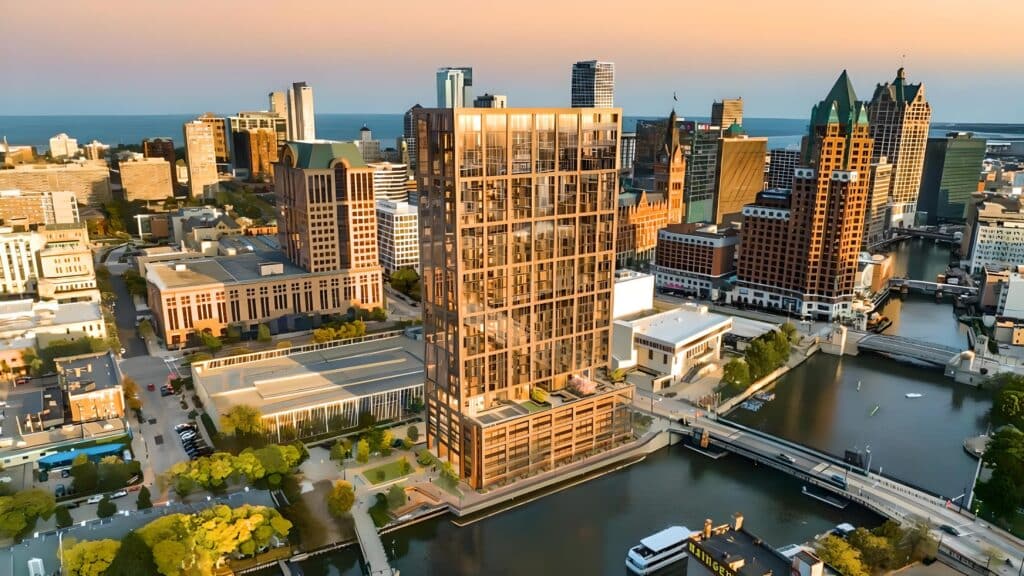American construction costs have now returned to pre-pandemic levels, with lumber prices “continuing to bounce around the bottom of the market.” It comes as a stop-start housing market—the primary driver of demand and pricing—is causing an oversupply of wood-based building materials to flood the market.
That is according to Skansa, one of the world’s largest construction companies, which is now turning to mass timber, green steel, and low-carbon cement to decarbonise construction.
The quarterly market, published by Skansa USA, shows that the US market for wood-based building materials (including lumber, MDF, and engineered wood products) remains sluggish, primarily due to the Fed Reserve’s expected rate cuts failing to materialise.
In recent months, experts have reported that the United States is the world’s “best bet for global lumber.” However, despite hopes that a long-awaited housing rebound (tied to rate cuts) resulted in massive spikes in plywood entering ports, sky-high interest rates have left private developers struggling to cover the borrowing costs of development—leaving the US construction market to be propped up by government projects and big tech.

“Declines in commercial office and privately financed development projects are offset by public infrastructure projects, technology/data centre projects, continued primary and secondary educational spending and health care project investments,” Mr Stouthamer said, with the cost of concrete up 22.1%, putting pressures on higher density development.
“Concrete escalated pretty steadily during 2023, and this trend is continuing so far this year,” said Rob Cantando, Skanska’s director of the strategic supply chain – with price increases driven by diesel, labour and raw material costs.
According to Brandon Huff, the vice president and division manager for general construction for Portland-based Deacon Construction, “The larger (private) projects that require a lot of financing are harder to move, so we’re seeing a lot of the smaller renovation projects still being prevalent, and some of the small commercial projects still being prevalent.”
Future Data Centres Made with Wood? Big Tech Eyes Green Shift
According to Mr Cantando, demand for data centres and electric-vehicle factors is fueling record shipments of “sandwich walls” – with prefab and modular factories now running at full capacity.
Last month, Wood Central reported that new data centres, 20 times larger than just a few years ago, are now in the pipeline, with big tech looking beyond traditional steel-and-concrete systems to meet net-zero targets.
Speaking at Data Center World, Priyal Chheda, Sustainability lead for Corgan—North America’s top data centre architect—said timber systems should be in the mix as data companies look to cut embodied carbon to build data centres of the future—for an industry expected to mushroom from US $195 billion in 2023 to US $500 billion over the next decade.
“Work is needed now if targets for 2030 are going to be met,” Ms Chheda said. “Instead of focusing on the difficulties, data centre managers should look for opportunities for good return on investment via sustainability measures.” That includes mass timber, which is vital to slashing embodied carbon and meeting net zero targets worldwide.
And whilst mass timber might not be the best option for data halls, architects and engineers must collaborate to determine the best areas where timber can be used based on its strength, fire resistance, and cost.
- To find out why the UN is pushing for timber to replace steel, concrete and glass in future buildings, visit Wood Central’s special feature. Click here to learn more about why embodied carbon is driving a new boom in timber-based buildings.






